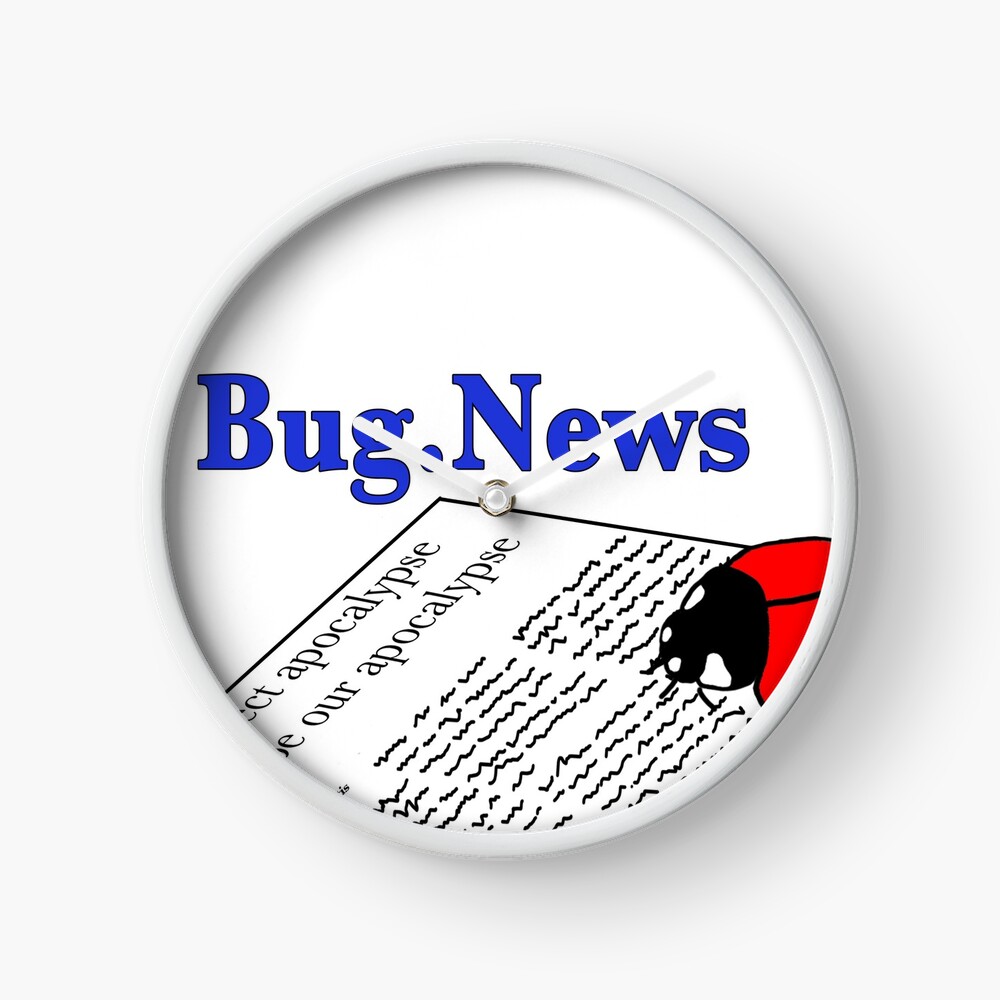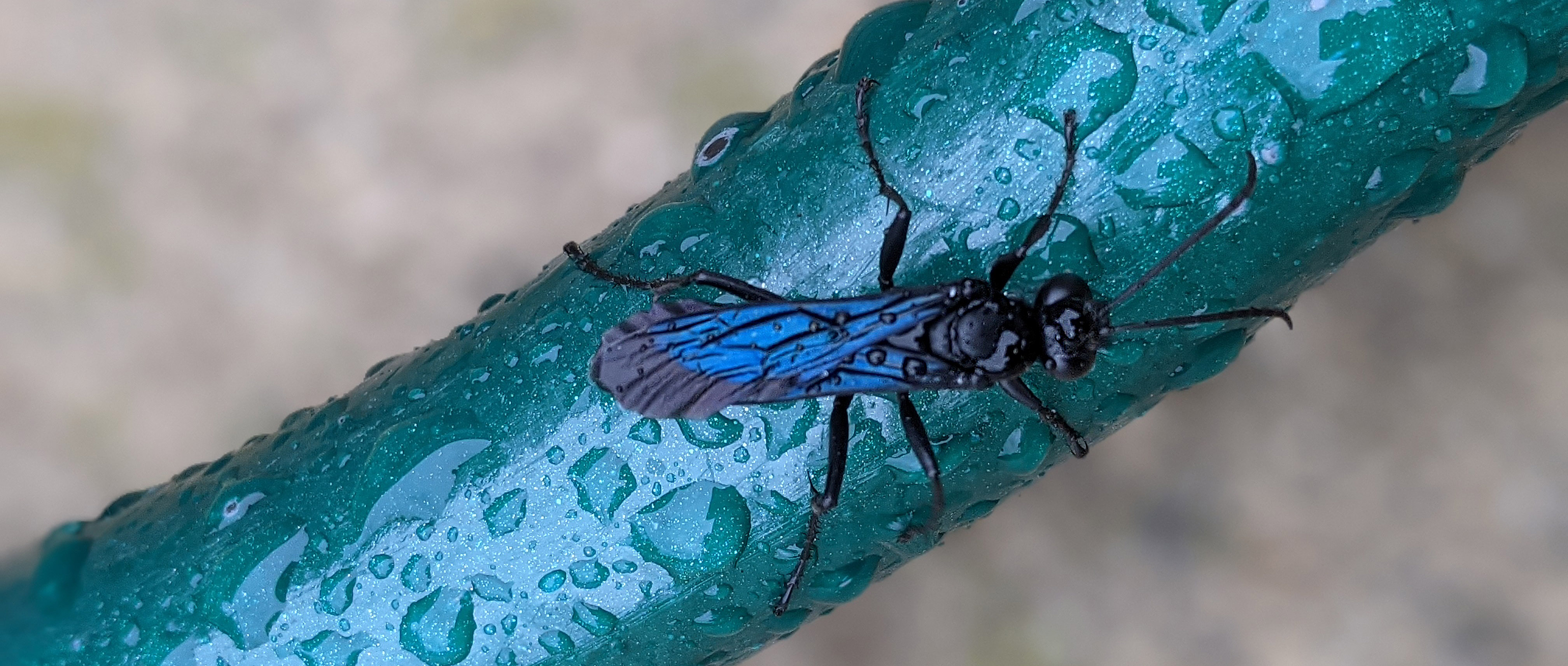
In-between the summer rain showers, I found this lovely creature resting on my garden hose. This is a type of Thread-waisted wasp (taxonomic family = Sphecidae), called the Great Black Wasp, Sphex pensylvanicus.
I’m not sure why she was out and about in the rain, but it did slow her down enough so I could snap a few photos (actually, looking at “her” in profile, I think “she” might be a “he”…). I’ve seen her/him, or others that look just like it, flitting about around our house (really more like twitchy flying), but they never hold still enough for me to get a photo. Thank you rain shower.

At first, I thought this was a different wasp in the same family, the Common Blue Mud-dauber Wasp, Chalybion californicum. I was very excited about that because they eat spiders! Creepy, crawling, icky, web making spiders. Huzzah!
Now I know I’m an entomologist, and I’m supposed to like all bugs, but I’ve just never liked spiders. Spiders are great predators, usually harmless to humans, and generally beneficial to have around, but they freak me out. Now wasps on the other hand, are beautiful, sleek, marvelously skilled hunters – and they don’t do that creepy web thing. So, yeah. I’ll take wasps over spiders any day. And if the wasps actually eat the spiders… Even better! :)
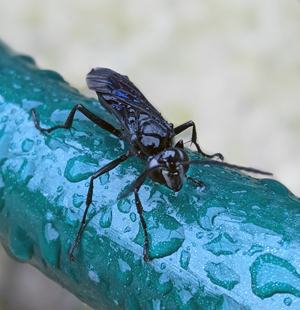
Unfortunately, what I found wasn’t C. californicum, it was actually a related wasp called the Great Black Wasp, Sphex pensylvanicus. This species eats grasshoppers, crickets, and katydids (or “orthopteroids” in bug nerd talk). While that is just fine, and they are super pretty, I was really hoping it was eating my spiders lol.
Now technically the adult wasps flying about aren’t the ones that eat the orthopteroids. The adult wasps drink nectar from flowers to keep their motors running. They seem to really like the flowers on my oregano plants (check out the links below if you want to try and attract some to your garden). Its actually their babies that do the grasshopper/cricket/katydid eating (see how much easier it is to just say “orthopteroids”?). The mother wasps go and catch the orthopteroids, paralyze them, bring them back to provision a small nest, lay an egg on the orthopteroid, and then leave the egg to hatch and devour the stunned orthopteroid.
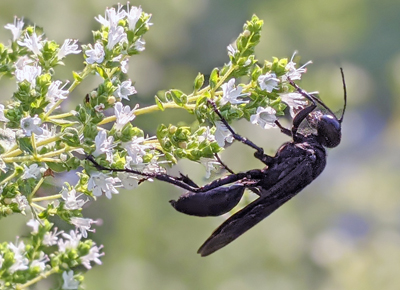
S. pensylvanicus is a type of “solitary” wasp. This means that they don’t have big nests or hives like yellow jackets or honey bees– just small individual ground nests with several rooms and a single baby in each room. Like most solitary wasps and bees, S. pensylvanicus is non-aggressive since there is no big hive to protect. And unless you are a grasshopper, cricket, or katydid, or try to trap one in your hand (I think only silly entomologists like me consider doing that), they have no reason to sting you.
If you’d like to learn more about these lovely wasps, check out:
To learn more about wasps in general, consider these books:
- Wasps: The Astonishing Diversity of a Misunderstood Insect (affiliate Amazon link - great book!)
- Wasps: Their Biology, Diversity, and Role as Beneficial Insects and Pollinators of Native Plants (affiliate Amazon link)
Last fun note – I did actually get to see a live specimen of C. californicum up-close earlier this month. Several awesome UM EEB students from the Tibbets lab and James lab brought one into the museum the other day for me to double check the identification on. They had correctly identified the wasp, but its always a good idea to check most identifications under a microscope and against expert identified museum specimens. It can be extremely difficult to see important identifying characteristics just from photos. Thanks for visiting and good luck with starting a lab colony of the wonderful spider hunting wasps!
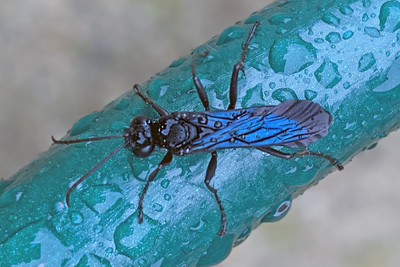
Support the blog
Like my blog? Want to help keep the new content coming and the pages ad free? Consider becoming one of my Patreon Patrons! Any amount, big or small, helps me spend more time creating and less time trying to keep the lights on. Patreon Patrons can also get exclusive access to monthly newsletters, story sneak peeks, story requests, and more! Please consider supporting the blog and check out my Patreon Patron support page.
Ok, you say, but what is this Patreon thing you are talking about? Patreon is a service that helps connect content creators with folks who want to help support creative endeavors. Patreon is setup to be able to safely handle the financial side of transactions so both the patron and the creator can be confident their information is secure. You can read more about what Patreon is HERE.
Thank you!!
Not interested in a Patreon monthly subscription? Prefer to make a one-time contribution? We have that option too! Help support the blog with a one-time donation through PayPal instead! Thank you!!
Gifts & Swag Galore
Now you can get prints of some of our favorite critters on Red Bubble! Everything from tote bags and pillows, to greeting cards and note books, to t-shirts and mugs!
Check out it out HERE. The store is organized by design, so pick a critter picture to see all the gift options :)
Here are just a few examples:
And so much more! Check out all the bug patterns HERE.
Join the email list
Want Bug News stories & announcements sent to your inbox? Never miss a story: Join the Bug News email list here or email me at Erika@bug.news with “Join email list” in the subject line.
Questions? Comments? Corrections?
I’d love to know what you thought and what’s on your mind. Email it to me at erika@bug.news. I’ll do everything I can to answer your questions, address your comments, and keep the stories updated :)
We’re also on Facebook so you can leave a comment or start a discussion there too if you prefer that medium…




